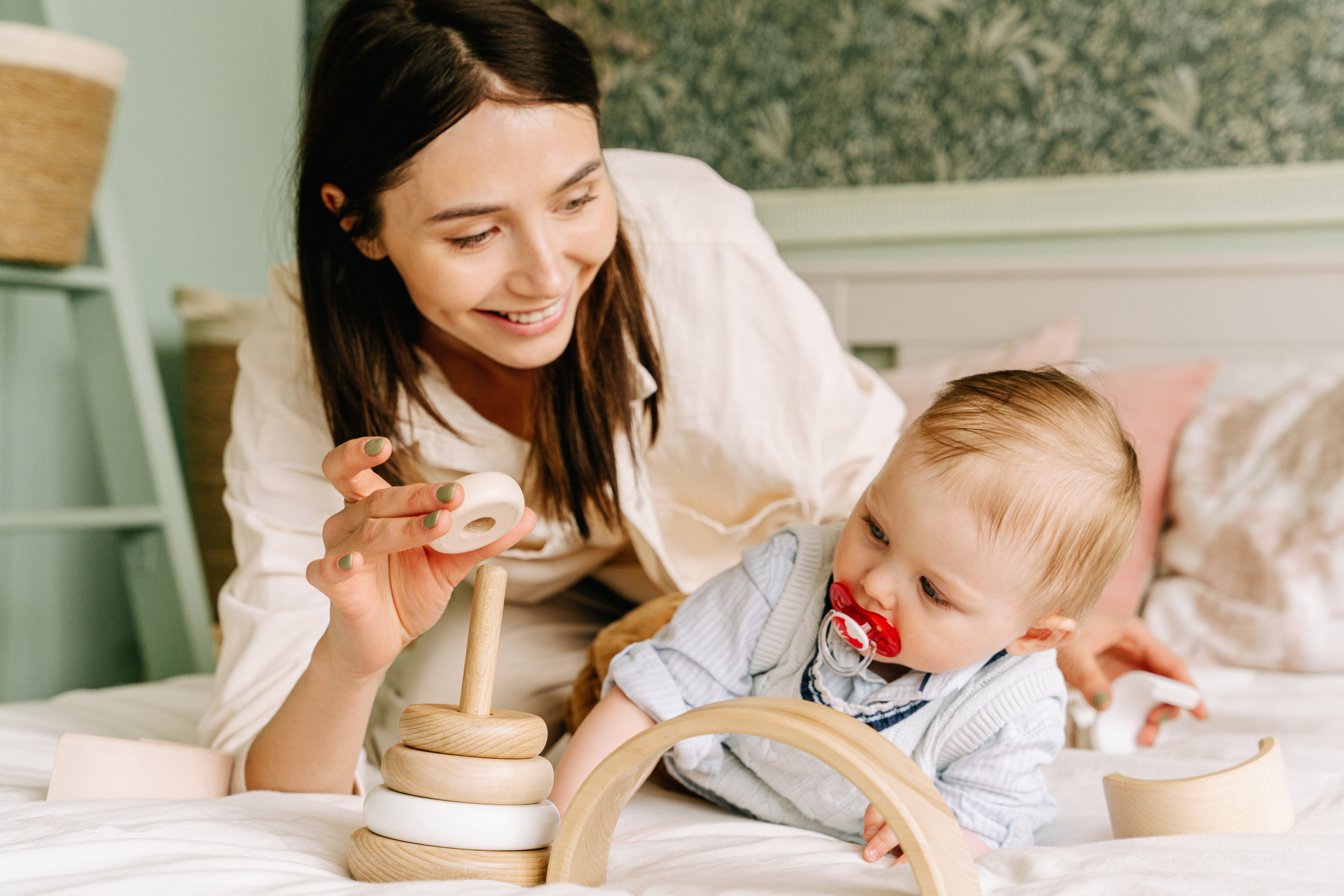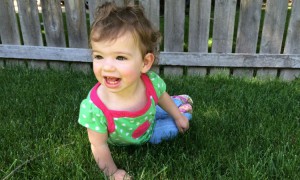To learn more about positions to help your baby develop their motor skills, go to On the back, stomach and side!
The foundations of a baby’s physical development are deep. Baby’s develop from head to their feet and from torso to their limbs. That is why your baby will learn to support their head, raise themselves to sit before standing up and walking. They will also develop their first arm movements before developing fine motor skills in their fingers to pinch.
A baby is a sponge when faced with the stimuli surrounding it. We know that a baby’s brain contains 100 times more free neurologic cells than an adult.
Based on current knowledge, baby development is sequential, predictable and cumulative. This means that the baby must acquire specific skills before being able to learn others. Step-by-step.
Play
Play is the ideal choice for babies and children to learn. Babies like new things are attracted to different objects and enjoy learning. When the baby is small, you need to be aware of the periods they are awake and available to learn. You have to find the right time so that playing is fun for both baby and parent. Over time, the baby will be awake for more extended periods and will have more time and availability to play with parents.
The best place to play and stimulate a baby is on the ground. The ground is the best playground possible. Just make sure they are safe when playing. You don’t need accessories or special equipment to help them develop. Everything you need is already in the home.
A baby’s five senses (smell, sight, touch, hearing and taste) are stimulated when breastfed by their mother. It’s a complete activity for a baby in full cerebral development.
Boys and girls learn differently but reach the same point in different ways. Often we hear that baby boys develop their motor skills faster, and others will say that girls will talk earlier. Don’t forget that every child (boy and girl) has their own development pace. That is why we talk about average ages for learning things and talking, to respect each child’s pace.
Freedom of Movement
Freedom of movement is a concept that appeared in Hungary in the 1960s. Dr. Pikler, a pediatrician, promoted leaving the baby to learn and move at their own pace, providing them with a safe and adapted environment that will encourage and stimulate their developmental abilities. Parents that follow this approach limit the help they give to the baby, but provide them with a proper environment and games that will get babies to make efforts and complete new activities at their own pace on their own.
Freedom of movement does not mean leaving the baby alone and waiting for them to learn new things without supervision. It is offering them a proper environment and making sure that they acquire different skills in their own way based on their age.
To learn more about accessories for baby motor development, go to Using Baby Accessories.



